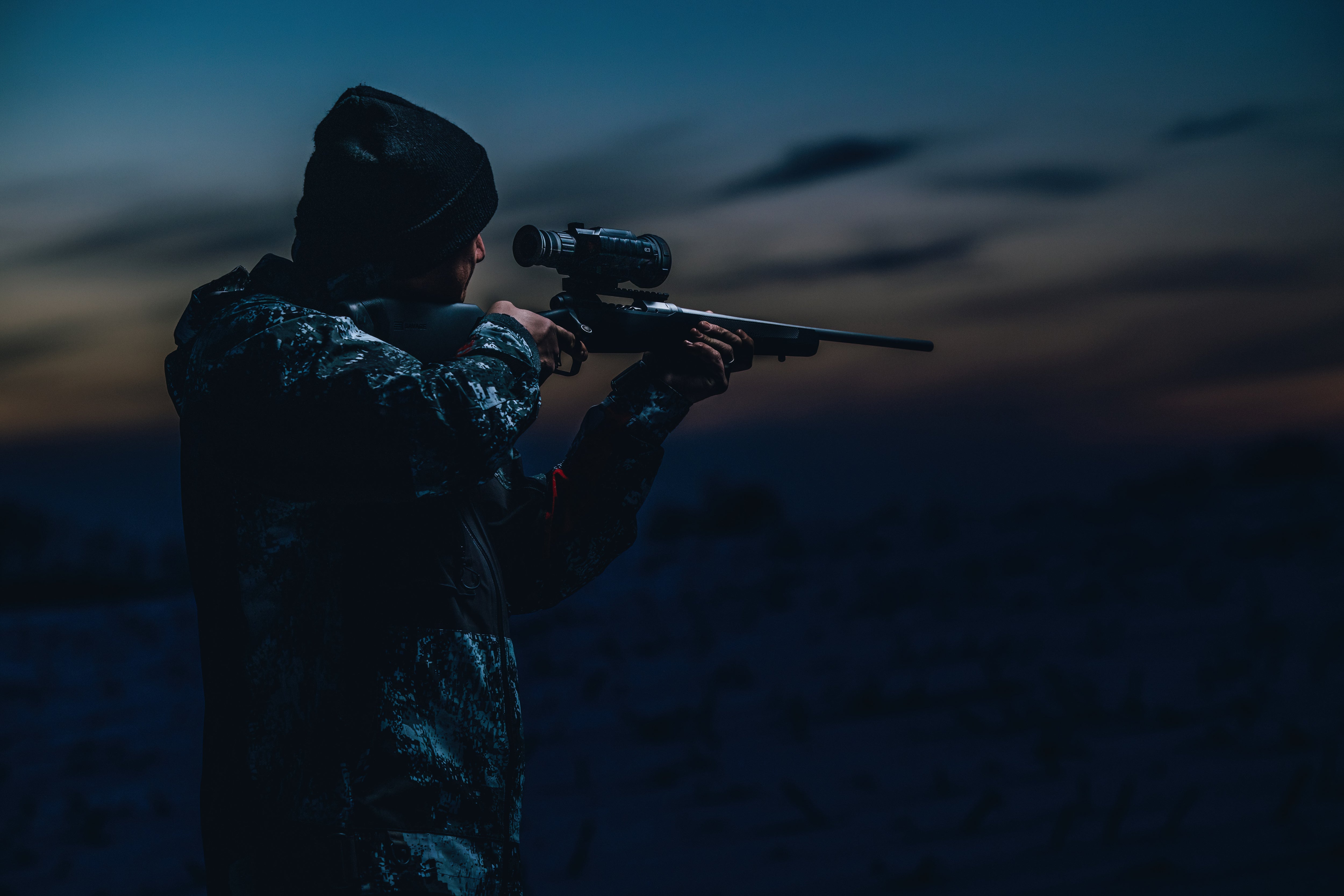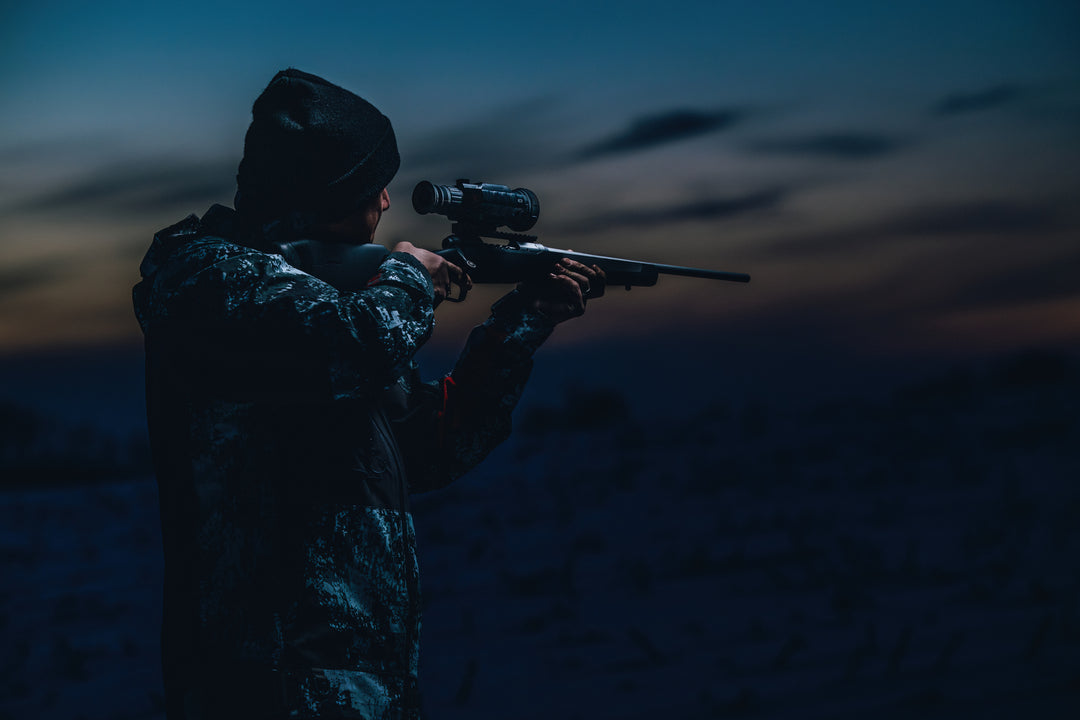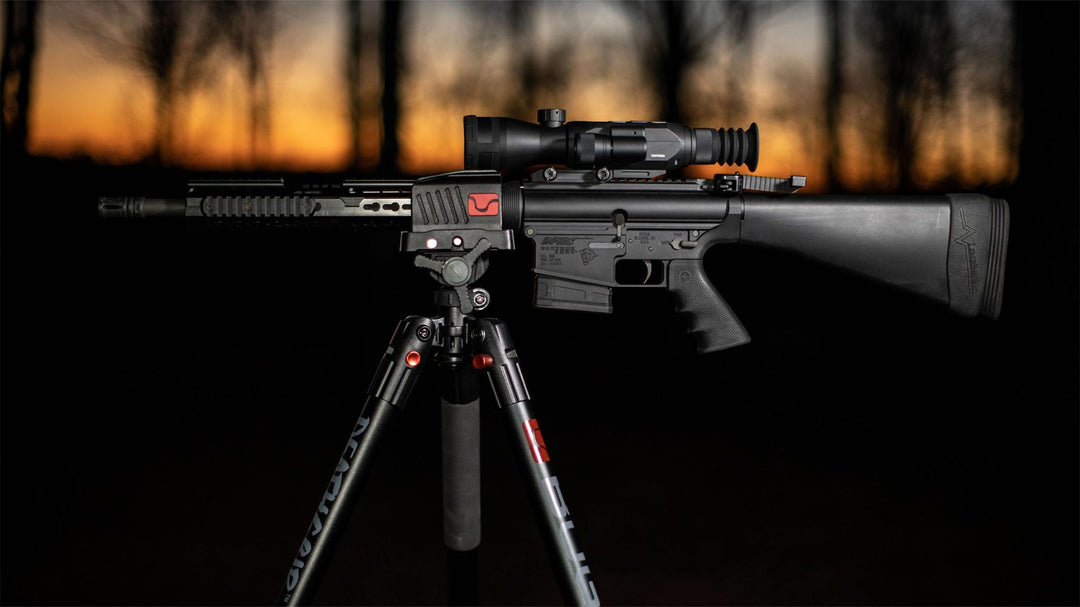Looking to get into nighttime predator hunting? You’ve come to the right place. Buying your first thermal scope or sight to add to your predator hunting arsenal is exciting, and it will open up a world of new opportunities. And figuring out the best one for you—and your budget—can be a challenge. We want to take the mystery out of buying a thermal optic. Plus, it will help you choose the right one to be successful in your nighttime hunts.
What to Consider
When considering the purchase of a thermal hunting scope or sight, several factors come into play to help you hunt predators more effectively once the sun goes down:
Intended Use & Where You’ll Hunt
Before starting your research, take some time to think about how you’ll use your new thermal scope or sight—and where you’ll use it. That’s because different thermal scopes and sights cater to different needs. For example, if you hunt predators at shorter-range in wooded clearings a lot of magnification might not be necessary. And a wider field of view could be helpful. By contrast, if you hunt at longer-range on farmland or in the desert, more magnification will let you see your prey coming in from a distance. Plus, a wider field of view could help keep you focused on your target.
Magnification Range of Thermal Scopes & Sights
Evaluate the scope's magnification capabilities and choose a range that suits your hunting style. And consider choosing your magnification range based on where you hunt and the typical distances you engage targets.
Detection and Recognition Ranges
When the thermal sensor detects the heat signature of an animal at a distance—that’s the detection range. This signature lets you know an animal is out there, although the image might not tell you what it is. And you can track the movement of the animal until you can recognize it—that’s the recognition range.
As you’re looking at thermal sights and scopes, those yardages—for detection and recognition—will be available. For example, the detection range of the X-Vision Optics Impact 350 Thermal Scope is 1,500 yards and the recognition range is 500 yards. That makes this scope a great choice for nighttime predator hunters who want to see prey at longer distances. By contrast, the X-Vision Optics Flex1 Wide View Thermal Sight has a detection range of 500 yards. Plus, it has a recognition range of 225 yards. This can be the perfect sight for anyone hunting in more defined environments. An example: a wooded clearing where predators first appear closer in, and shots are most often taken between 50 and 150 yards.
Thermal Scope & Sight Resolution and Image Quality
Higher resolution of the thermal sensor provides clearer images, allowing you to identify, track and get dialed in on targets more accurately. And optimal image quality is essential for effective target recognition. Plus, more effective recognition can and make you more successful with your night hunts.
Frame Rate
The frame rate determines how smoothly the thermal image updates. A higher refresh rate results in smooth, natural movements. And that helps you track an animal effectively. It also helps reduce eye strain during a long night of use. Make sure to pick a scope with a frame rate that meets your preferences and needs—because not all of the predators you’re after will be standing still!
Battery Life
Battery life is important for long night hunts. And thermal scopes and sights can, and will, use a lot of power. Choose one with a battery life that matches up with the length of your hunts. Plus, consider the type of batteries required and how easy there are to acquire—or charge.
Thermal Scope & Sight Reticle Options
Check the available reticle options and their customization features. A well-designed reticle enhances target acquisition and shot placement. And look for a scope or sight that offers a variety of reticle choices to suit different hunting scenarios and your personal preferences. For example, the X-Vision Optics Impact series of thermal scopes gives you 10 reticle options. The Thermal Reflex Sights gives you a choice of 6. Plus, both give you a wide range of reticle color palette options.
Weather Resistance
Mother Nature is known for her foul moods. So, make sure the thermal scope or sight you select is durable, weather-resistant, and can withstand the challenges that go hand-in-hand with night hunting.
Budget Considerations
Set a realistic budget and stick to it. Thermal scopes and sights are not inexpensive. You should always keep your intended use in mind as you evaluate thermal optics and the prices that go along with them. And don’t over-buy! There’s always the temptation to get more than what you need. But don’t-under buy, either! Get what you need to make your hunts successful. And carefully weigh price against the benefits each model you’re considering offers—and you’ll pick the right one.
Buying a Thermal Scope or Sight - Conclusions
In conclusion, investing in a thermal optics hunting scope or sight requires thorough consideration of your hunting preferences. Plus, you’ll want to consider your hunting environments and the features you need. And by evaluating all these factors, you’ll make the best decision for the way you hunt and your wallet.
And if you have questions as you move through your decision-making progress, we have a great team to help you. Shoot us a note and we’ll get back to you in a day or less. Need info right now? Give us a call at 833-993-2383.











